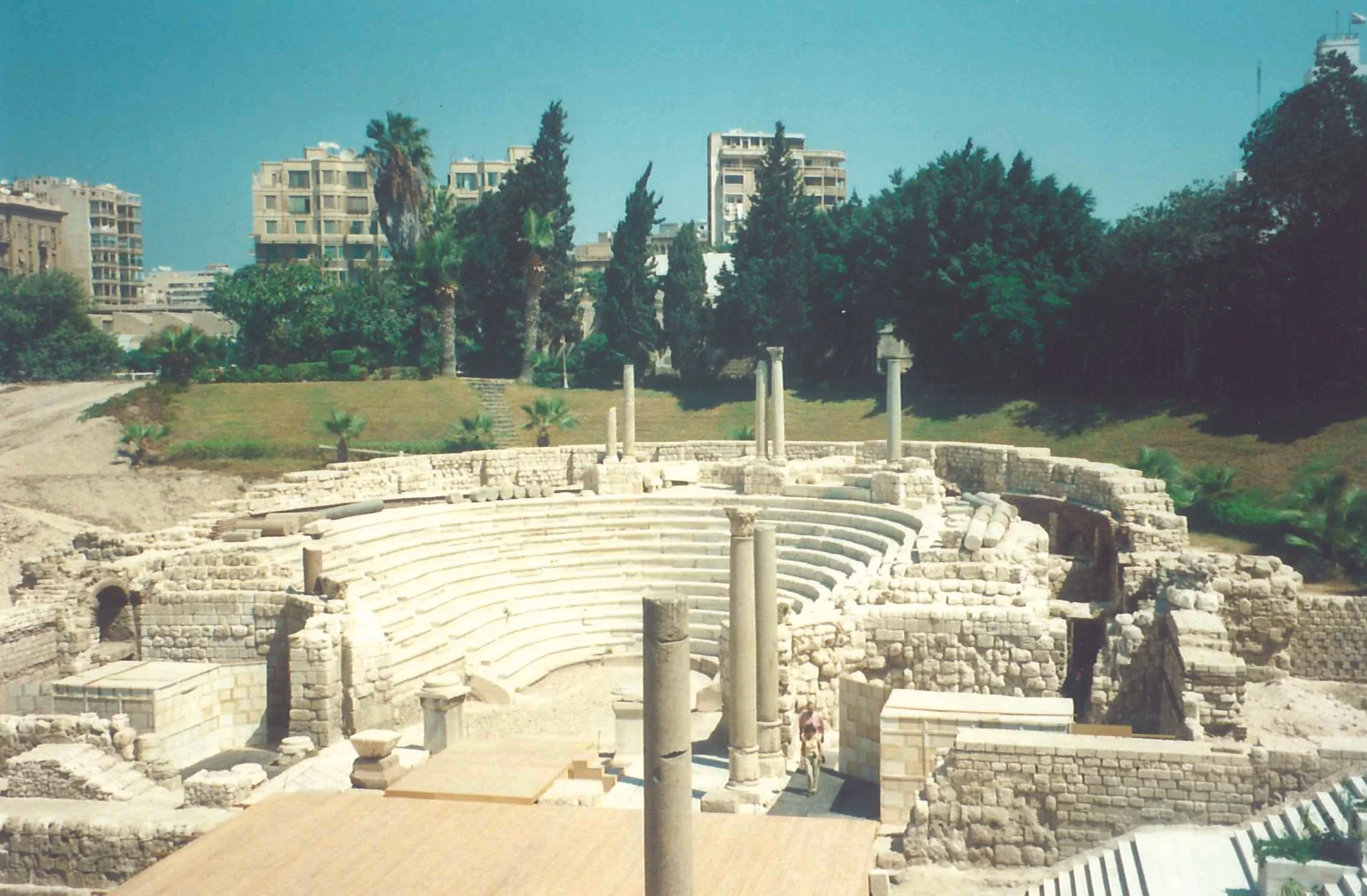Ancient Roman Amphitheater
An Ancient Wilderness
Beneath the bustle of modern Alexandria, an ancient circle of stone lies open to the sky—the Roman Amphitheater. Its marble steps, worn smooth by centuries, still descend in perfect curves toward a central stage. Here, voices once rose in debate, music filled the air, and spectacles drew citizens together in the heart of the Greco-Roman city.
Built in the 2nd century AD, the amphitheater was more than a theater. It was a space for gatherings, performances, and public life—where Alexandria’s blend of cultures came alive. Greek, Roman, and Egyptian traditions merged here, each act and speech echoing across the tiers. The city, famed for its library and learning, found in this place not only entertainment but community.
Experience It
For centuries the amphitheater lay hidden, buried beneath layers of earth and the march of time. It was not rediscovered until the 1960s, when archaeologists uncovered its elegant semicircle of white and gray marble, columns scattered like fallen notes of a long-lost song. Today it stands uncovered, a window into a city that once shone as the meeting point of the ancient world.
Sit on its steps, and the amphitheater still carries sound with surprising clarity—proof of the precision with which it was built. The space is quiet now, but the stones seem to remember: the cadence of orators, the applause of audiences, the murmur of a city at the height of its power.
Experience the stage


